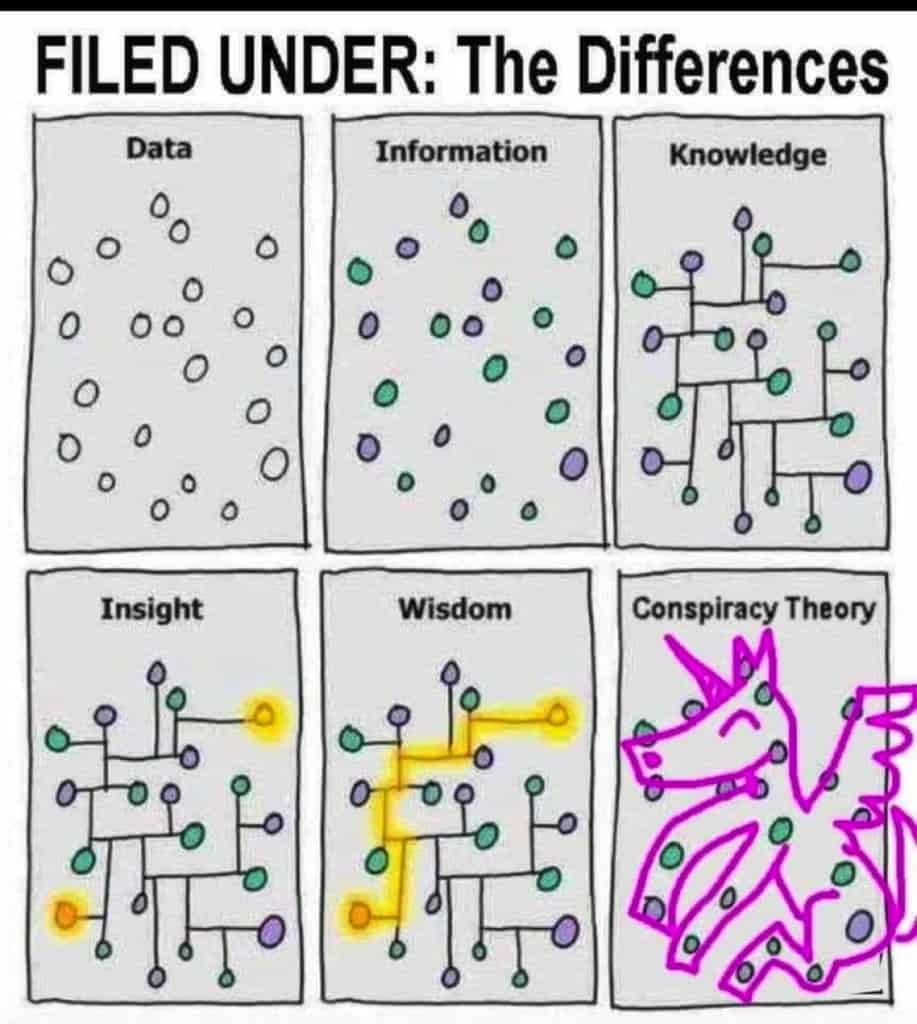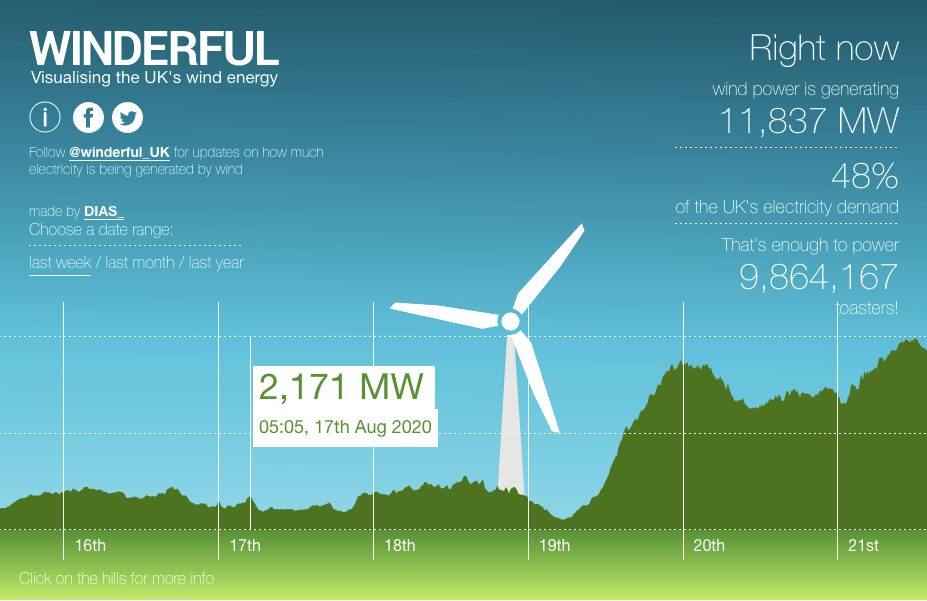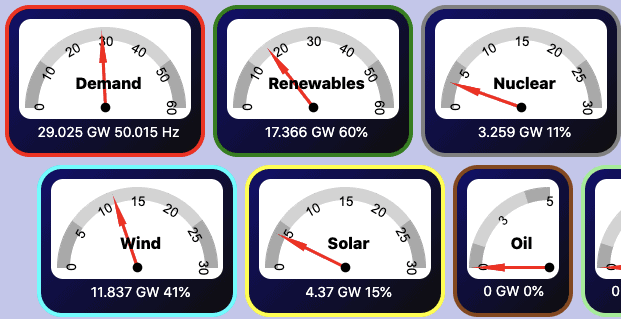EV Adoption’s Impact on Renewable Energy Storage & Surplus Consumption

About The EV Smart Charging rEVolution Column
This month we’re looking into Renewable Energy Storage and the Impact of EV Market Growth…
I’m Julian Skidmore, a senior software engineer at ByteSnap Design and helping to develop our EV – electric vehicle – charging solutions.
We’re a progressive embedded consultancy with an interest in EVs going back to 2012 when we designed and supplied EV chargers for the London Olympics. I’ve had a 2016 Renault Zoe EV since 2017 and over 20% of us who drive into work use a BEV [Battery Electric Vehicle].
In this monthly series, we’ll be covering EV innovations and our experiences with EVs. This is particularly from the perspective of EV charging and the charging infrastructure, which we believe is the other half of the EV revolution.
Introduction
There’s a joke going round at the moment, relating data all the way up to wisdom and finally Conspiracy Theory:

Image Source: mcgst.com: ‘The Differences’, August 2020
One of the great strengths of humanity is our ability to take a problem and break it down into smaller, easier to solve parts. Then, keep doing that until all the subproblems can be solved. It’s called procedural decomposition[1].
That kind of process is happening in society at the moment with regard to electric vehicles (EVs). To most people they initially look idealistic, but perhaps pointless. Then they pick up on a set of misleading and / or helpful ideas and information about EVs. Then there’s some personal encounter with EVs and friends with EVs and they start to see how it might be personally beneficial. One of the key ideas is to change from seeing ICE vehicles as the ideal, against which EVs need to exactly match, to seeing how EVs do things we need from vehicles and becoming aware of their strengths. For example, we hear batteries take time to charge, so it’s natural to expect battery swapping. Later we expect overly optimistic charge times to be a requirement, because that’s how it works with Petrol stations. Eventually we realise we mostly charge at home or work (which ICEs can’t do) and we don’t need to charge very quickly (except for long journeys).
So, at the bottom of the decomposition curve is when we see EVs solve the problem of travel for us and we can work around whatever weaknesses current EVs present for us (which differs for each person).
It’s much harder for us to build back up the other side and see the wider picture. How EVs connect to the still nascent energy revolution (this generation gets to revinent everything). Or how EVs will help to remodel society to be fitter, cleaner, less cluttered, more diverse, cheaper and more collaborative. Or how the technological revolution inherent in EVs currently belies their fairly conventional appearance, because EVs are software[2] sitting on mobile power stations.
That’s why charging and charging infrastructure is so integral: it’s the broadband of energy transmission that literally provides the connection to pretty much everything listed above. And what we want to consider here is how EVs will work with the transformation to renewable energy to provide an abundance of energy, sometimes better than free.
The Duck Curve & Renewable Energy Storage
In 2012, the California Independent System Operator noticed that there was a growing timing gap between renewable energy production (midday) and peak demand (early evening)[3]. As renewable energy generation increases, the gap will get bigger as it becomes more difficult for the decreasing amount of fossil fuel energy generation to meet it, even though the net generation of power doesn’t fall.
The solutions come in the form of renewable energy storage, of which EVs certainly play a part because they – in the medium term – will provide the greatest amount of battery storage. EVs do this is two ways:
- EVs represent the largest growth in battery storage capabilities in our lifetimes. Even our humble 22KWh Zoë could in theory provide enough energy for a few households during an evening.
- When EV batteries aren’t good enough for driving, they’ll still be good enough to provide renewable energy storage in a battery farm for another 10 to 15 years. This came up entertainingly on a recent episode of the BBC TV show Countryfile of all places[4].
What makes this particularly interesting is that it doesn’t look like there will be an upper bound for renewable energy. For example, in the UK there is plenty of room, both geographically and in terms of generation to ramp up wind generation by a factor of 2 or more[5] and for solar power to increase several fold. I as write, the entertaining website Winderful tells us that 48% of the UK’s electricity is coming from wind:

Image Source: winderful.diascreative.net, August 2020
A more complete figure (with slightly different figures for wind) tells us an impressive 71% of electricity generation is carbon-free, resulting in 137g CO2/KWh (or about 34g CO2/Km in an EV).

Image Source: gridwatch.co.uk, August 2020
This is from about 24GW of capacity, which is expected to grow to 50GW by 2030 and fitting solar power to just 61% of south-facing roofs could provide electricity for the current business electricity needs[6].
Putting It Together
So, if we put both of these trends together what we find is that we have the potential for an abundance of renewable energy coupled with ample means of being able to transfer it to periods during the day when they’re most needed.
Since EVs are already geared up to relatively rapid charging rates and can be designed or modified[7] to supply energy back to the grid, they present a readily available medium for this renewable energy storage storage and grid balancing.
What this means is that EVs will become a source of personal revenue during the energy revolution. Not only is it becoming possible to be paid to provide energy during peak demand, but we will find that being willing to accept battery charging during low demand represents another source of income especially at the point where renewable generation makes energy prices better than free. This has become even more extensive in Germany since it started happening in 2017[8] and undoubtedly it will happen elsewhere.
EV Adoption
Personal mobility and an abundance of (fossil fuel) energy were key hallmarks of the record-breaking rise in Western living standards between 1945 and 1973 (when the oil crisis hit).
These factors come together again for the renewable energy era; so it may be that EV adoption will drive relatively better living standards again. In that case, how well does the UK stand globally and what can we do to raise our game?
The EV market is growing so quickly (at >100% per year) that the EU analysis released for the end of 2019[9] are already out of date. At the time, the UK ranked just below the European average (but still 13th out of 29), with a plug-in share of 3.2%; that switched to ⅔ BEVs over 2019. Current UK market shares are heading to around 9% as of July, though as a whole this year, Coronavirus has skewed the figures upwards[10].
It’s known that there’s some correlation between EV adoption and wealth, which should be obvious since EVs are still rather expensive. Nevertheless, consider Portugal, which is not very wealthy, but is in the middle with 11% EV adoption[11][12].

Image Source: *2018 (various data sources [13][14][15][16][17][18])
The above table shows some correlation between Renewable energy rates and EV adoption, but this breaks down at the lower end. What is clear though is that government financial incentives can play a strong part. The lack of VAT on company cars in Portugal, for example, has been cited as a reason for its high EV adoption rates; and the recent EV incentives for UK businesses has resulted in a greater take-up of EVs and a shift from PHEVs to BEVs.
The Business Connection
What’s certainly essential is an increase in the rate of charging infrastructure installation, particularly fast AC chargers. This is because chargers are the means of delivering the changes we anticipate. We need mostly AC chargers because Rapid DC chargers are primarily used for way-points, where the EV arrives empty, charges and then immediately heads off to the rest of the journey. Rapid DC chargers are relatively expensive and ultimately don’t provide any more grid power than multiple AC chargers, but they do provide V2G more awkwardly, because it’s better to discharge a large number of vehicles by a bit, than a small number of vehicles by a lot.
By the same token, AC chargers connected to vehicles whose locations can be predicted will make it easier to provide Vehicle-to-Grid energy.
These things come together in terms of company incentives. Companies with a large EV uptake require a high installation rate for on-site AC chargers, because the workforce will not be willing to wait, queue, nor disrupt their working day to swap out EVs from rapid chargers.
In addition, workplace AC chargers and cars provide an ideal environment for businesses to make money from energy surplus, by using it to charge (in particular, company) cars when energy prices are negative. When these cars return home, they are then in an ideal position to be used to provide grid electricity, with some proportion going to the car user and some to the company itself. This will be the case regardless of whether an employee works from home or on site, since the same rationale applies.
Conclusion
EV adoption is part of a larger, much more significant global cultural shift, but one of the main drivers is government policy – primarily because governments, despite their weaknesses, are lenders of last resort and act as a lever for business confidence.
The next critical shift in EV adoption occurs as we start to see the wider connections; in this case to make better use of renewable energy to store it when we don’t need it for when we do. This leads to the counter-intuitive result that businesses will become literal vehicles for clean technology, using income generated from smart destination charging points, to further subsidise their investments in electric vehicles. Which means, in turn, an acceleration in AC charging points to match the current (and expected future) exponential growth in EVs and energy bandwidth.
Further Reading
[1]https://sites.fas.harvard.edu/~libs111/files/lectures/unit1-3.pdf
[2]https://cleantechnica.com/2020/02/06/tesla-is-a-tech-company-heres-why/
[3]https://en.wikipedia.org/wiki/Duck_curve
[4]https://www.bbc.co.uk/programmes/m000lx13
[5]https://en.wikipedia.org/wiki/Wind_power_in_the_United_Kingdom
[6]http://www.greenbuildingpress.co.uk/article.php?article_id=1930
[7]https://insideevs.com/news/343510/renault-starts-piloting-v2g-charging-using-ac
[9]https://theicct.org/sites/default/files/publications/EV-EU-Factbook-2020.pdf
[11]https://cleantechnica.com/2020/07/30/10-countries-with-5-10-plugin-vehicle-market-share/
[12]https://cleantechnica.com/2020/07/12/portugal-ev-market-share-12/
[13]https://renewablesnow.com/news/portugals-power-was-60-renewable-in-jan-july-2020-709231/
[15]https://www.renewablesnow.com/news/renewables-produce-18-of-netherlands-power-in-2019-689615/
[17]https://www.cleanenergywire.org/factsheets/germanys-energy-consumption-and-power-mix-charts
[18]https://luxtimes.lu/luxembourg/38764-10-of-electricity-in-luxembourg-from-renewable-sources
How can ByteSnap help you today?
From start-ups to blue chips, ByteSnap’s embedded systems software developers are enabling companies to stay a step ahead by providing them with bespoke solutions. Maintain your competitive edge – contact us today and let your business be among them!




